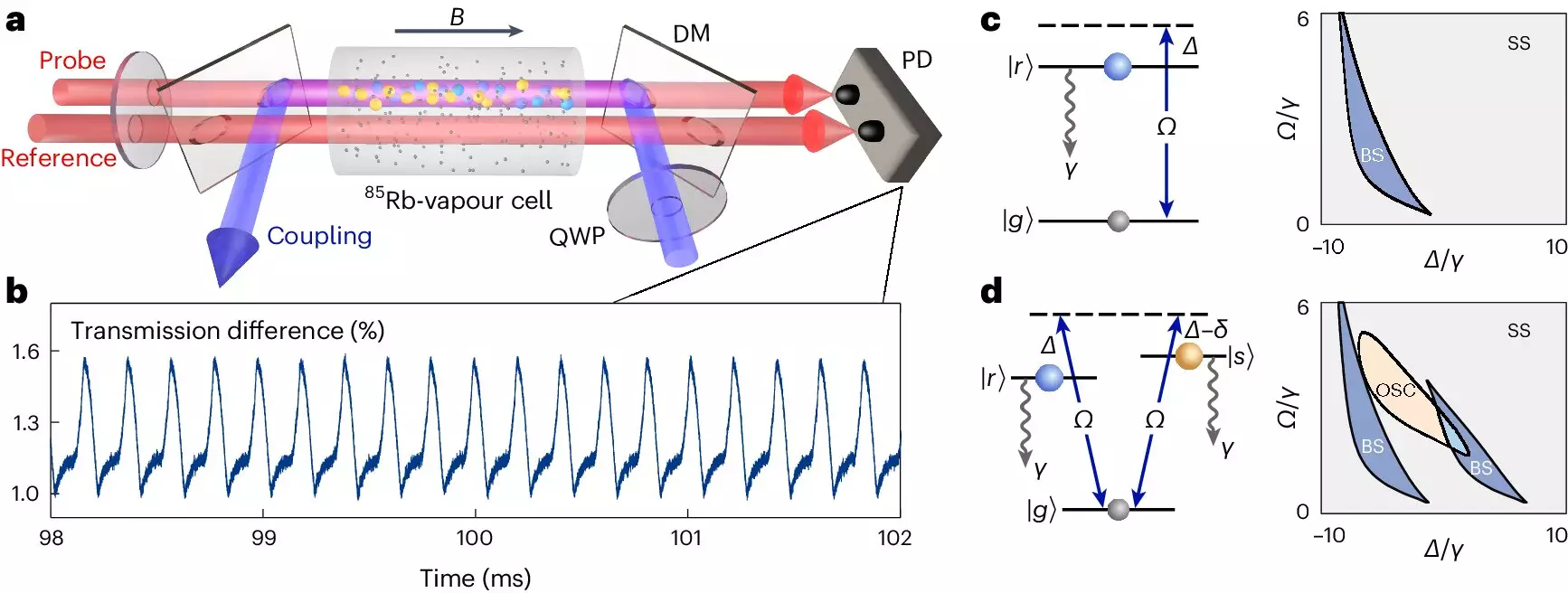Time crystals have been a topic of much debate in the scientific community ever since Nobel Prize winner Frank Wilczek proposed the concept in 2012. The idea of an object that repeats itself not in space, but in time, seemed improbable to some while others sought to explore the possibilities under unique conditions.
For years, the notion of time crystals was met with skepticism. The idea that a periodic rhythm could emerge without any specific rhythm imposed on the system or a correlation with time seemed far-fetched to many. However, recent developments have shed new light on this intriguing concept.
A breakthrough occurred when a team of researchers at Tsinghua University in China, with support from TU Wien in Austria, successfully created a time crystal using laser light and Rydberg atoms. These atoms, which have a diameter several hundred times larger than normal, played a crucial role in the experimental process.
In the experiment, laser light was directed into a glass container filled with a gas of rubidium atoms. The interaction between the light and atoms resulted in the emergence of highly regular patterns of oscillation in the intensity of light at the other end of the container. This phenomenon occurred spontaneously, without any specific rhythm being imposed on the system.
Rydberg atoms, which are created when electrons orbit the atomic nucleus on different paths due to added energy, played a key role in the experiment. These giant atoms with expanded electron shells exhibit unique interactions with laser light, leading to the formation of spontaneous oscillations between different atomic states.
The discovery of a time crystal opens up new possibilities for research and innovation. The self-sustained oscillations observed in the experiment could have applications in sensor technology and other fields. By deepening our understanding of the time crystal phenomenon, scientists are paving the way for future advancements.
Time crystals represent a fascinating area of study in the realm of physics. The creation of a time crystal at Tsinghua University marks a significant milestone in unraveling the mysteries of this unique concept. As research in this field progresses, we can expect to uncover new insights into the nature of time and the properties of crystalline structures in temporal dimensions.


Leave a Reply